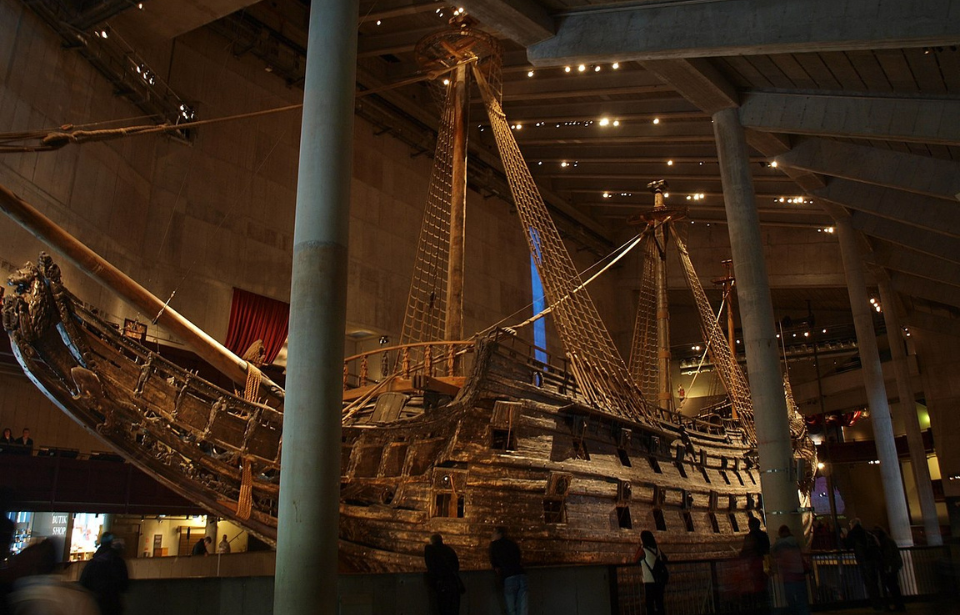On August 10, 1628, the Swedish warship Vasa departed on her maiden voyage. Unfortunately, after sailing just 1,400 yards, she sank to the bottom of Stockholm harbor. The vessel remained beneath the surface until 1961, when she was raised with her hull almost fully intact.
Since then, Vasa has become a museum exhibit attracting tens of millions of visitors.
Construction and design of Vasa
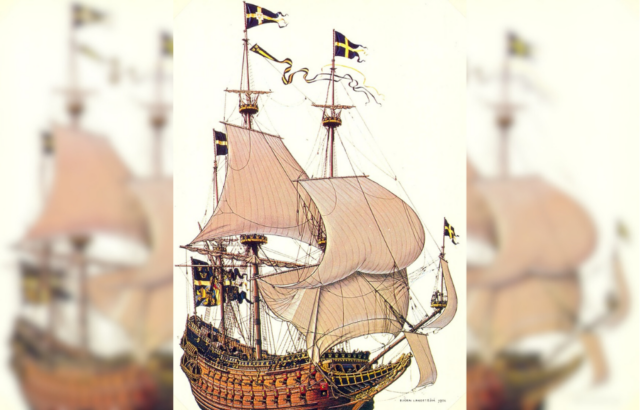
Vasa was laid down at the royal shipyard in Stockholm, Sweden in 1626 and launched the following year. The warship boasted a displacement of 1,210 tonnes, and was armed with an astounding 64 guns, including forty-eight 24-pounders, eight 3-pounders, two 1-pounders and six stormstycken (howitzers). This armament was located on two gundecks, with a shallow hold below.
Vasa also had a complement of 145 sailors and 300 soldiers.
In the summer of 1628, Söfring Hansson, the captain responsible for supervising construction, wanted to demonstrate Vasa‘s stability for Vice Adm. Clas Larsson Fleming. The test saw 30 men run back and forth along the upper deck, making the warship roll from side to side. Worried this would cause the vessel to capsize, Fleming ordered the test be stopped.
Impressive ornamentation
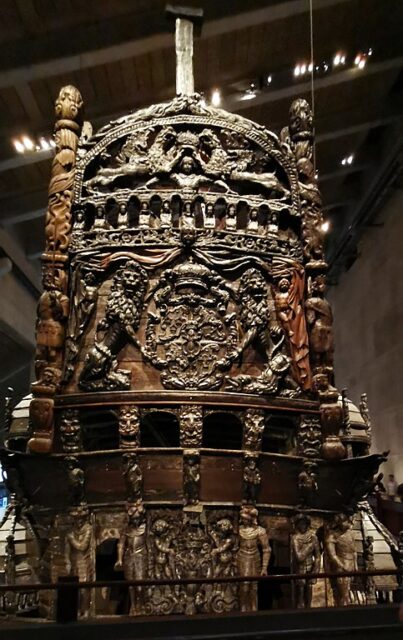
Like other ships of the era, Vasa was highly decorated with sculptures displaying the authority, prestige and pride of the Swedish monarchy and Navy, while also intimidating and taunting the country’s enemies. These figures were almost all sculpted in Dutch grotesque style and depicted mermaids, sea monsters, griffons and lions, as well as figures from Roman and Greek antiquity.
Some of the identified figures include Hercules, who appeared as both his younger and older self. On each side of the beakhead, Roman emperors, such as Tiberius to Septimius Severus, were also depicted. King Gustavus Adolphus, was shown as a young boy with blond hair and a griffon on either side, representing his father, Charles IX.
These figures were all painted in bright colors, and paint residue has been found on the hull of the warship.
Sinking of Vasa
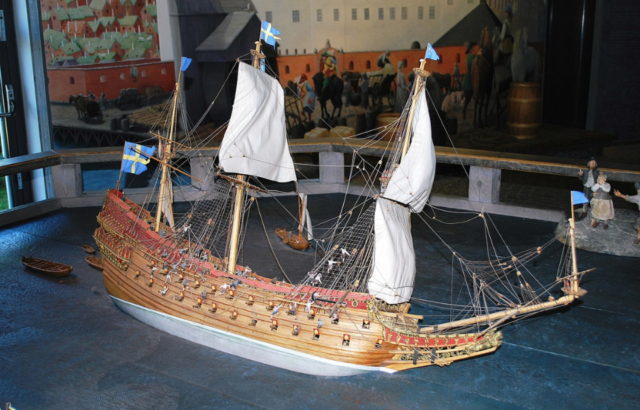
On August 10, 1628, Vasa departed on her maiden voyage. The weather was calm, with a light southwest breeze. The warship had four sails set and her gun ports open, ready to fire a salute as she departed Stockholm.
A gust of wind suddenly filled Vasa’s sails, and she heeled to port. The vessel righted herself when her sheets were cast off, but a stronger gust pushed the ship to port. As the gun ports were open, water began to rush into the lower gundeck, filling the hold. Vasa began to sink in view of a crowd estimated to be in the hundreds of thousands. While other boats in the harbor tried to help, 30 sailors died during the catastrophic event.
The king said the sinking was the product of “imprudence and negligence” and wanted those responsible punished. An inquest, with a tribunal of members of the Admiralty and Privy Council, took place in September 1628. No one was ultimately punished, with the blame falling on the original and deceased shipbuilder, Henrik Hybertsson.
The reason for the sinking, as later discovered through research, was that Vasa had little stability. The ship had a high center of gravity compared to her center of buoyance, which saw little force needed to put the vessel on her side. The reason for this issue was the hull’s construction. Vasa had decks that were ultimately higher than necessary. The guns onboard were also extremely heavy, making up five percent of the ship’s total displacement.
Vasa was also built using Swedish feet (29.69 cm) and Amsterdam feet (28.31 cm) by different teams. The use of these different measurements led to the port side being heavier. With it weighing more, the ship’s high center of gravity, the weight of her guns and her having her gun ports open allowed water to rush in, Vasa was seemingly doomed.
Recovering the wreck
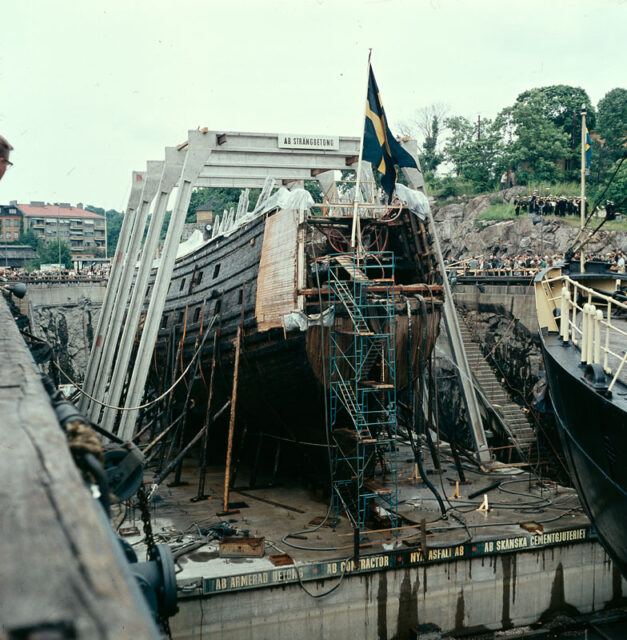
Attempts were made to raise Vasa within days of her sinking. Early attempts by Ian Bulmer, an English engineer, successfully righted the warship, although she remained stuck in the mud. Vasa would continue to rest underwater for 333 years, slowly deteriorating, although still largely intact.
After being lost for centuries, the wreck was rediscovered in the late 1950s, and efforts were made to raise Vasa. Over the course of two years, divers dug six tunnels under the ship, with steel cable slings cradling the hull, allowing the wreck to be pulled up. Between August and September 1959, 18 lifts were made, seeing Vasa raised from a depth of 105 to 52 feet.
The divers then prepared for the final lift. The gunports were closed, and the holes were plugged. After about two weeks of work, Vasa was raised from the water, drained and towed to the dry dock.
Vasa as a museum ship

Between 1961-88, Vasa was placed in a temporary facility called the Wasavarvet – or the Vasa Shipyard. It acted as both a museum for visitors and a workplace for researchers and conservationists.
More from us: This Ship Was Lost to the Ocean for 200 Years. Here’s What Scientists Found
In 1981, the Swedish government made plans to build a permanent museum. Work began in 1987, with Vasa moving to her new home the following year. The museum was officially opened in 1990 and has since seen millions of visitors.
